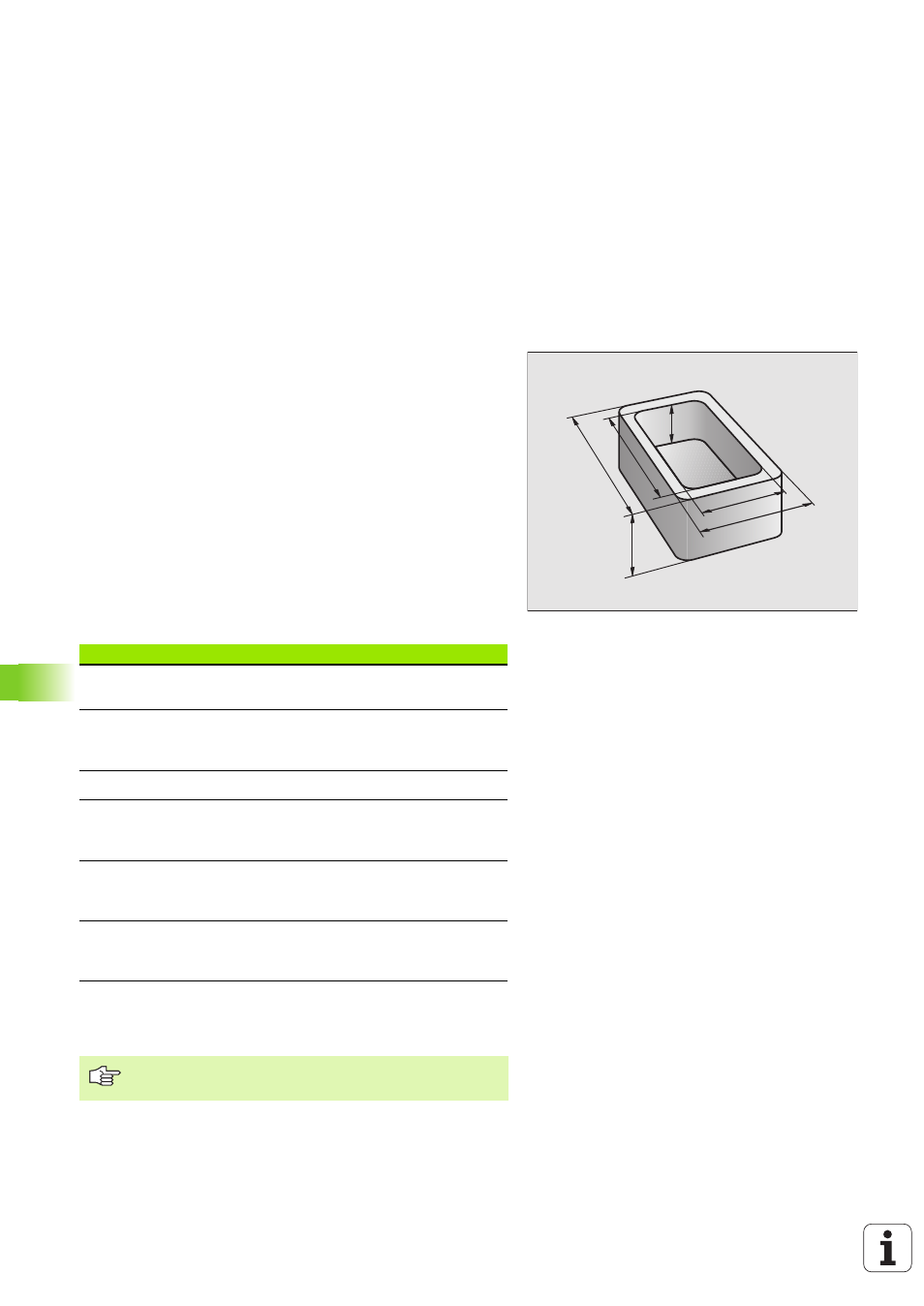1 principle and overview – HEIDENHAIN TNC 320 (340 551-02) User Manual
Page 334

334
10 Programming: Q Parameters
1
0
.1 Pr
inciple and Ov
erview
10.1 Principle and Overview
You can program an entire family of parts in a single part program. You
do this by entering variables called Q parameters instead of fixed
numerical values.
Q parameters can represent information such as:
Coordinate values
Feed rates
Spindle speeds
Cycle data
Q parameters also enable you to program contours that are defined
with mathematical functions. You can also use Q parameters to make
the execution of machining steps depend on logical conditions. In
conjunction with FK programming you can also combine contours that
do not have NC-compatible dimensions with Q parameters.
Q parameters are designated by the letter Q and a number between 0
and 1999. They are grouped according to various ranges:
QS
parameters (the S stands for string) are also available on the TNC
and enable you to process texts. In principle, the same ranges are
available for QS parameters as for Q parameters (see table above).
Meaning
Range
Freely applicable parameters, globally effective
for all programs stored in the TNC memory
Q1600 to
Q1999
Freely applicable parameters, as long as no
overlapping with SL cycles can occur, globally
effective for the respective program
Q0 to Q99
Parameters for special TNC functions
Q100 to Q199
Parameters that are primarily used for cycles,
globally effective for all programs stored in the
TNC memory
Q200 to
Q1399
Parameters that are primarily used for call-active
OEM cycles, globally effective for all programs
that are stored in the TNC memory
Q1400 to
Q1499
Parameters that are primarily used for DEF-
active OEM cycles, globally effective for all
programs that are stored in the TNC memory
Q1500 to
Q1599
Note that for the QS parameters the QS100 to QS199 range
is reserved for internal texts.
Q4
Q2
Q3
Q1
Q5
Q6
